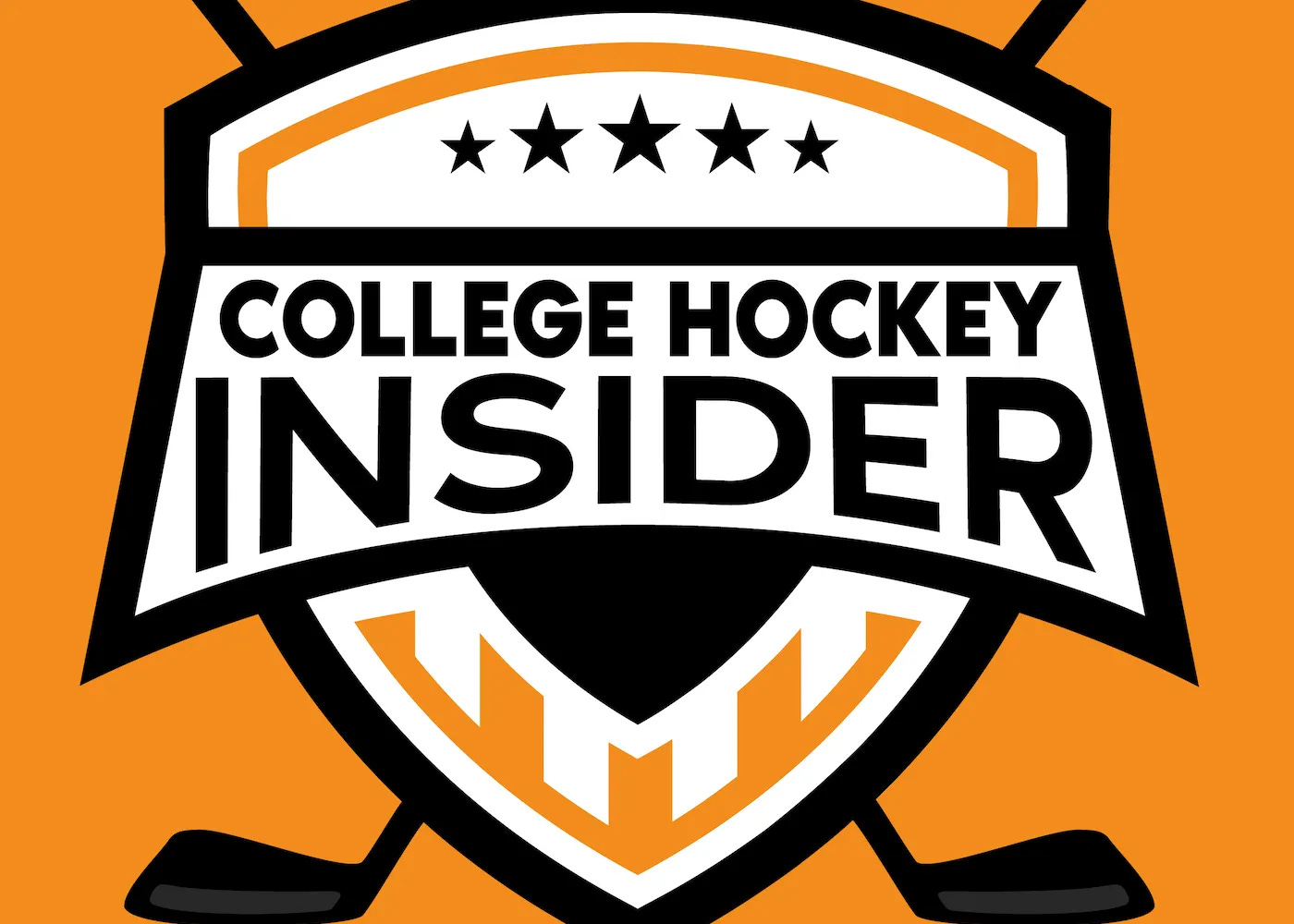2025-26 College Hockey Preseason Rankings
McMahon’s Preseason Rankings
Rankings by Conference
Atlantic Hockey
Sacred Heart (62.0)
Robert Morris (54.7)
Holy Cross (52.1)
Bentley (51.3)
Army (51.2)
Air Force (48.6)
Canisius (41.4)
Niagara (39.9)
Mercyhurst (37.9)
RIT (35.2)
Big Ten
Michigan State (92.3)
Penn State (88.8)
Michigan (87.1)
Minnesota (78.0)
Wisconsin (76.7)
Notre Dame (71.3)
Ohio State (68.1)
CCHA
Michigan Tech (68.6)
Bowling Green (65.8)
St. Thomas (58.0)
Minnesota State (58.0)
Augustana (55.7)
Northern Michigan (54.9)
Ferris State (53.2)
Lake Superior State (51.9)
Bemidji State (51.8)
ECAC
Quinnipiac (86.5)
Harvard (67.6)
Clarkson (62.2)
Dartmouth (61.9)
Cornell (57.2)
Colgate (56.8)
Union (55.3)
Princeton (51.3)
Brown (49.8)
Yale (48.3)
RPI (46.7)
St. Lawrence (38.8)
Hockey East
Boston University (91.3)
Maine (90.5)
UConn (86.4)
Providence (79.2)
UMass (76.0)
Boston College (71.6)
Merrimack (70.8)
Northeastern (69.9)
UMass Lowell (68.6)
Vermont (57.1)
New Hampshire (55.7)
NCHC
Western Michigan (100.0)
North Dakota (86.5)
Denver (76.6)
Arizona State (71.8)
Colorado College (71.2)
Minnesota Duluth (71.0)
Omaha (61.8)
St. Cloud State (59.8)
Miami (52.1)
Independents
Stonehill (51.2)
Alaska (50.2)
Lindenwood (47.8)
Long Island (44.8)
Alaska Anchorage (42.8)
Methodology
1) Player Grades
First things first: I’ve assigned a grade to every player in college hockey this season. It’s a modified version of Dom Luszczyszyn’s Game Score — adjusted because not all of the data points used at the NHL level are available in the NCAA. InStat provides a wealth of data — 90 percent of it excellent — though some gaps remain.
The formula closely mirrors what College Hockey News uses for its CHIP metric, with my own modifications to better weight traits I consider critical. Personally, I place a premium on tall, mobile defensemen and strong two-way power forwards. That doesn’t mean players outside these profiles are penalized, but those who excel in these areas are rewarded accordingly.
A development curve is built in as well. A player’s numbers from last-season are adjusted for expected growth from freshman to sophomore year, sophomore to junior year, etc. That curve diminishes as players age, reflecting how veterans tend to plateau by their senior season. Occasional leaps — a jump from 15 points as a junior to 40 as a senior — happen, but they’re rare.
Projections are also weighted by strength of schedule, broken down on a per-game basis, and then extrapolated over 34 games, the length of a standard regular season.
2) Incoming Freshmen
The same formula is applied to incoming freshmen. InStat provides extensive data at the junior level, which I translate to the NCAA level. Over the past three seasons, I’ve tracked all NCAA freshmen and developed a curve based on their junior league and age. For example, a 17-year-old scoring 60 points in 50 USHL games is more impressive than a 20-year-old doing the same. Players are also bonused according to their star rating from Neutral Zone.
This season presents a challenge: we have zero data on CHL players entering college hockey, yet over 300 are expected to join NCAA programs. My solution was to scale their rating relative to the USHL. Next season, with more CHL-to-NCAA data, this process will be refined. As with all players, these numbers are broken down per game and extrapolated over 34 games.
3) Team Grades
It’s impossible to simply aggregate player scores, especially with teams carrying different roster sizes. To normalize, I project lineups for each team: top six defensemen, top 12 forwards, and the top-ranked goalie. This eliminates the bonus that would otherwise go to teams carrying 29 players versus 26. So, every team is ranked using the same number of players, and a total score is developed.
4) Positional Rankings
New this year, I include positional rankings using the same top-6 defensemen, top-12 forwards, and top goalie criteria. Each team will have positional ranks, overall rank, year-over-year comparisons with Pairwise and league finish, and a score out of 100. This score quantifies gaps between teams. For instance, teams ranked No. 15–19 in my rankings (to be written up later) are only separated by 0.8 points, illustrating how tightly bunched certain tiers are. The wider the margin, the clearer the gap.


